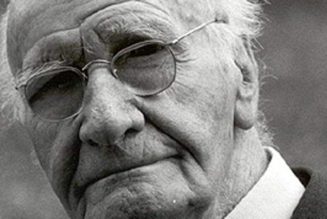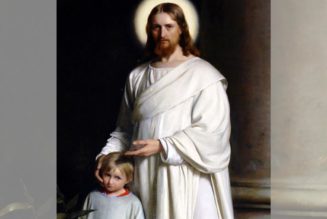On December 5, 2022, two of my colleagues at the University of Notre Dame, Tamara Kay and Susan Ostermann, both on the faculty of the Keough School of Global Affairs, published on op-ed in the Chicago Tribune purporting to refute “lies,” “intentional misinformation,” and “utter falsities,” that have served to “erode access to abortion” in the United States.
The day after, Fr. John I. Jenkins, C.S.C., President of the University of Notre Dame, published a letter to the editor to the Tribune stating:
. . . Tamara Kay and Susan Ostermann are, of course, free to express their opinions on our campus or in any public forum. Because they chose to identify themselves as Notre Dame faculty members, I write to state unequivocally that their essay does not reflect the view and values of the University of Notre Dame in its tone, arguments or assertions.
As a professor at Notre Dame who teaches about justice about politics, including global affairs, I wish to exercise the same freedom. I consider one of the four “lies” my colleagues allege: “abortion kills babies,” as they put it. They write that “almost 90% of abortions occur during the first 10 weeks of pregnancy when there are no babies or fetuses.” The truth is that babies begin at conception and has great consequences for justice.
What is magic about the moment of conception? skeptics ask. In fact, something special happens at this moment: A new human being is formed. Three important qualities characterize it.
First, it is complete. A unified being with an entire set of chromosomes, containing the full incipient capacities of a human person, now exists. Had not the mother’s egg been fertilized, no such being would exist.
Second, it is distinct. Although this being is dependent upon the mother’s nourishment, it differs from the mother’s kidney or stomach in that it is a separate human being that exists within a larger human being.
Third, it possesses an internally directed trajectory of growth. Once formed, the zygote immediately begins to multiply, a process of expansion that, unless halted by natural threats or human decision, will develop into a person who will laugh, throw a baseball, and acquire grey hair.
Those who deny that human life begins at conception almost always assign the beginning of life – or, they might say, of life with value, or of personhood – to the activation of one of this being’s attributes or activities: brainwaves, a heartbeat, awareness, viability. Such an assignment, though, is arbitrary: On what grounds ought the development of this or that attribute or activity to be designated as the critical moment? Further, the logic confuses attributes or activity with the being who possesses them. Human beings are not heartbeats or performing math or red hair; rather they are beings who possess heartbeats, perform math, and sport red hair. These qualities, nascent at the time of conception, are possessed by a being who stands prior to them. An unborn person, it is said, is not a potential human being but rather a human being with potential.
One of the perils of identifying human beings with what they have or do is that it renders certain human beings whose capacities are undeveloped, damaged, or impaired less than fully human: newborn infants, Alzheimer’s patients, the mentally disabled. If we hold that human beings possess inviolable dignity, then these less-than-full humans possess less-than-full dignity. It is both refreshingly honest and troublingly consistent that Princeton ethicist Peter Singer, who argues that human beings do not attain worth until they are self-aware, allows infanticide in the case of severely disabled infants. “The life of a newborn is of less value than the life of a pig, a dog or a chimpanzee,” he wrote in 1979 in his classic textbook, Practical Ethics.
Scientists confirm that life begins at conception. A careful study (also here) of 5,337 biologists at over 1,000 institutions around the world conducted by a University of Chicago doctoral student found that 96% of them agreed on the proposition. The sample was unbiased: 89% of the respondents identified as liberal and 85% as pro-choice. The study cites reams of pages from embryology textbooks that teach the same. The evidence is so preponderant that to deny that life begins at conception is to deny science, much as skeptics of climate change or of the veracity of the 2020 U.S. presidential election are charged with denying truth.
As scholars of genocide tell us, dehumanization is a prelude to mass killing. The judgement that a prenatal human being is merely a potential life was critical to the U.S. Supreme Court’s authorization of abortion in its Roe v. Wade opinion of 1973. More than 64 million abortions have ensued in the United States. Iceland, making the same judgment about potential life, aspires to eliminate Down’s Syndrome by eliminating people with Down’s Syndrome, aborting babies whom pre-natal tests show carry the condition.
Around the world, over 12 million abortions take place every year, according to the most cautious estimates. (Note that the Alan Guttmacher Institute, using different counting rules, concludes that some 73 million abortions take place per year.) By comparison, an estimated one million deaths took place in the Rwandan genocide of 1994, a widely recognized mass killing, while the World Health Organization estimates that 250,000 deaths per year will result from climate change, a threat to life whose coverage in the mass media, academia and international institutions dwarfs that of global abortion. Rwanda and climate change merit our study and our action, to be sure. But why does not also more than one billion abortions that have taken place in the world since the Soviet Union first legalized the practice in 1920?
And why does not the mass taking of life every year receive nearly as much public attention as large-scale killing in wars and other human-rights atrocities? An answer came to me vividly in September 2019, when I saw the news that 2411 aborted babies had been found on the rural Illinois farm of Dr. Ulrich Klopfer, an abortion doctor who had died on September 3rd of that month. Dr. Klopfer had performed tens of thousands abortions over several decades at his practice in South Bend, Indiana, less than a mile from the campus of Notre Dame, as well as in Ft. Wayne, Indiana, and Gary, Indiana. Apparently, he had brought many of the dead bodies to his farm in Illinois, where he had preserved them in a derivative of formaldehyde. Hands, arms, legs and heads were all visible. Not babies?
A few national media outlets covered the story. National print newspapers usually placed it below the fold or beyond the front page. Most of them referred to “fetal remains,” though a Fox News online piece did use the term “unborn children.” How would these outlets have told of the discovery of 2441 dead bodies of some other class of human beings found on a farm on rural Illinois? Say, elderly? Disabled? A minority? A political faction? Would not the story merit the largest headline size on the front page of the New York Times or the Washington Post? Would not it stand as a landmark dark event in American history? Perhaps the explanation of the limp coverage is that were the media to have reported appositely the dead children on Dr. Klopfer’s farm, they then would have had to examine how they speak of the fact that every day since 1973, on average, well more than 2441 babies have had their lives taken.
“A society will be judged on the basis of how it treats its weakest members, and among the most vulnerable are surely the unborn and the dying,” Pope St. John Paul II said. So, too, will a Catholic university in its witness to justice. Notre Dame states its institutional support for the choice for life. Centers, institutes, clubs, faculty, staff, and students advocate for unborn life and support pregnant women in their choice for life. President Jenkins has led Notre Dame’s contingent at the March For Life in Washington, D.C. on several occasions. This is education for building peace and protecting human rights. The Keough School of Global Affairs proclaims its mission as integral human development, a concept in Catholic social teaching that centers on human dignity. The teaching and study of politics and global affairs at Notre Dame, then, has no choice but to take up what is far and away the largest defilement of human dignity on the planet.
Join Our Telegram Group : Salvation & Prosperity







